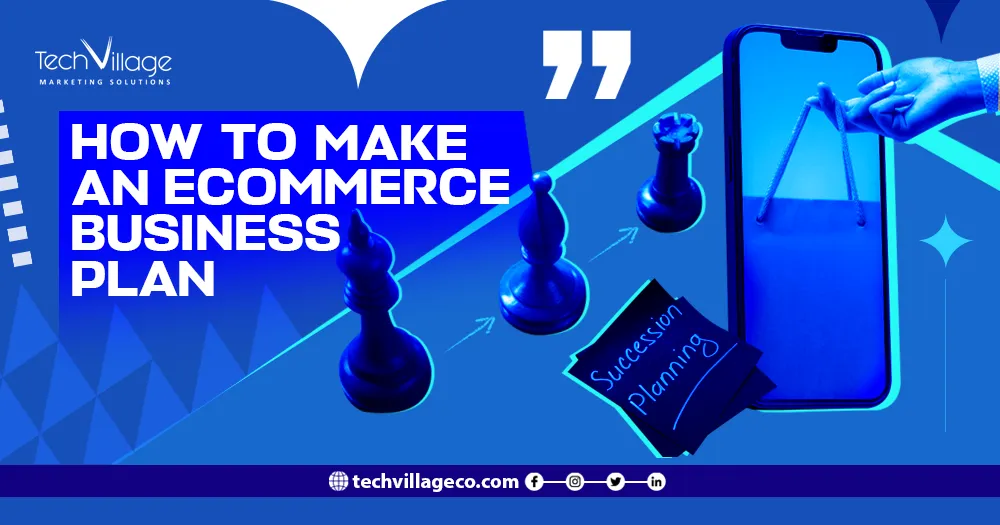If you are searching for how to make an ecommerce business plan? Here are the answers. Crafting a robust e-commerce business plan is the cornerstone of success for any online venture. This comprehensive document serves as a roadmap, guiding entrepreneurs through the intricate process of establishing and operating a successful e-commerce business.
In this guide, we will delve into the essential steps and key components that form the foundation of how to make an ecommerce business plan? Whether you’re an aspiring entrepreneur or an existing business owner seeking to expand into the digital realm.
This guide will provide you with the insights and strategies to create a business plan that not only outlines your vision but also attracts investors, guides operations, and sets you on the path to e-commerce success.
Table of Contents
ToggleWhat is an ecommerce business plan mean?
If you are wondering about how to make an ecommerce business plan? Here is the answer. An e-commerce business plan is a comprehensive document that outlines the strategy, goals, and operations of an online business. It serves as a roadmap for entrepreneurs, guiding them through the process of starting, running, and growing an e-commerce venture.
This business plan typically includes details about the business’s mission, market analysis, product or service offerings, marketing and sales strategies, financial projections, organizational structure, and other essential information.
how to make an ecommerce business plan? provides a structured framework for decision-making, helps secure funding from investors or lenders, and offers a clear path to achieving the business’s objectives in the competitive world of online commerce.
Read also: Ecommerce Product Page Design Html.
What are the 7 steps of a business plan?
In addition to how to make an ecommerce business plan? A well-structured business plan typically includes seven key components or steps:
1- Executive summary:
- This section provides a concise overview of the entire business plan. It includes the mission and vision of the business, a summary of the products or services offered, a brief description of the market, and the business’s unique selling proposition.
2- Business description:
- Here, you provide a more detailed explanation of your business. This includes the legal structure (e.g., LLC, corporation), the history and background of the business, location, and the industry in which it operates.
3- Market analysis:
- This step involves conducting a thorough analysis of your target market. You need to define the size, demographics, trends, and needs of your market.
Get to know: Best Website For Ecommerce Small Business.
4- Products or services:
- Describe in detail what products or services your business will offer. Explain the features and benefits of your offerings and outline your pricing strategy.
5- Marketing and sales strategy:
- This section outlines your marketing and sales plans. It should detail how you intend to reach your target customers, acquire new customers, and retain existing ones.
6- Organization and management:
- Describe the organizational structure of your business, including information about key team members and their roles.
7- Financial projections:
The financial projections section is where you present your business’s financial plan. This includes income statements, cash flow statements, balance sheets, break-even analysis, and growth projections.
Here’s: Drop Shipping Websites Through Shopify.
How to make an ecommerce business plan?
how to make an ecommerce business plan? is one of the most frequently asked questions recently by specialists and entrepreneurs in various fields, and according to the tech village team, preparing a plan to promote your business includes performing many tasks, such as conducting research or studying the market and then working to promote this study. Here are the key attributes of how to make an ecommerce business plan:
1- Clarity and conciseness:
The plan is clear and easy to understand, avoiding jargon and technical language. It gets to the point without unnecessary details.
2- Realistic and achievable goals:
It sets clear, realistic, and achievable goals and outlines a strategy for reaching them.
3- Thorough market research:
It demonstrates a deep understanding of the target market, including its size, demographics, trends, and competitive landscape.
4- Unique selling proposition (USP):
It highlights the business’s unique selling proposition that differentiates it from competitors.
5- Well-Defined products or services:
It clearly describes the products or services offered, their features, benefits, and pricing.
6- Comprehensive marketing and sales strategies:
It outlines a well-thought-out marketing and sales strategy, detailing how the business plans to attract and retain customers.
7- Organizational structure:
It provides information about the business’s organizational structure, key team members, their roles, and their qualifications.
Read also: Best Shopify Ecommerce Websites.
8- Financial projections:
It includes detailed financial projections, covering income statements, cash flow statements, and balance sheets, along with break-even analysis and ROI expectations.
9- Risk analysis and mitigation:
It identifies potential risks and challenges the business may face and outlines strategies in how to make an ecommerce business plan.
10- Flexibility and adaptability:
It recognizes that the business environment is subject to change and is adaptable to evolving market conditions and circumstances.
11- Supporting documentation:
It includes supplementary documents, such as market research data, resumes of key team members, legal documents, and any other relevant materials.
12- Professional appearance:
It is well-organized, properly formatted, free of errors, and visually appealing. Presentation matters.
13- Realism:
in addition to how to make an ecommerce business plan?It maintains a sense of realism and honesty, avoiding overly optimistic projections or unsupported claims.
14- Alignment with purpose:
It stays true to the business’s mission and vision, ensuring that all components are aligned with the overall purpose of the business.
15- Feasibility:
It is feasible, meaning that the business plan demonstrates how the goals can be achieved, given available resources and constraints.
Conclusion
In conclusion, this guide includes how to make an ecommerce business plan. Creating an e-commerce business plan is a vital endeavor for anyone looking to thrive in the competitive world of online commerce.
A well-structured plan provides direction, clarity, and a solid foundation for your e-commerce venture. It serves as a reference point for decision-making, a tool for attracting investors, and a roadmap for achieving your business objectives.
FAQ
How long should a business plan be?
The length of a business plan can vary depending on its purpose and audience.
What makes a good business plan?
A good business plan is a well-structured and comprehensive document that effectively conveys your business concept, strategies, and goals.

 AR
AR




